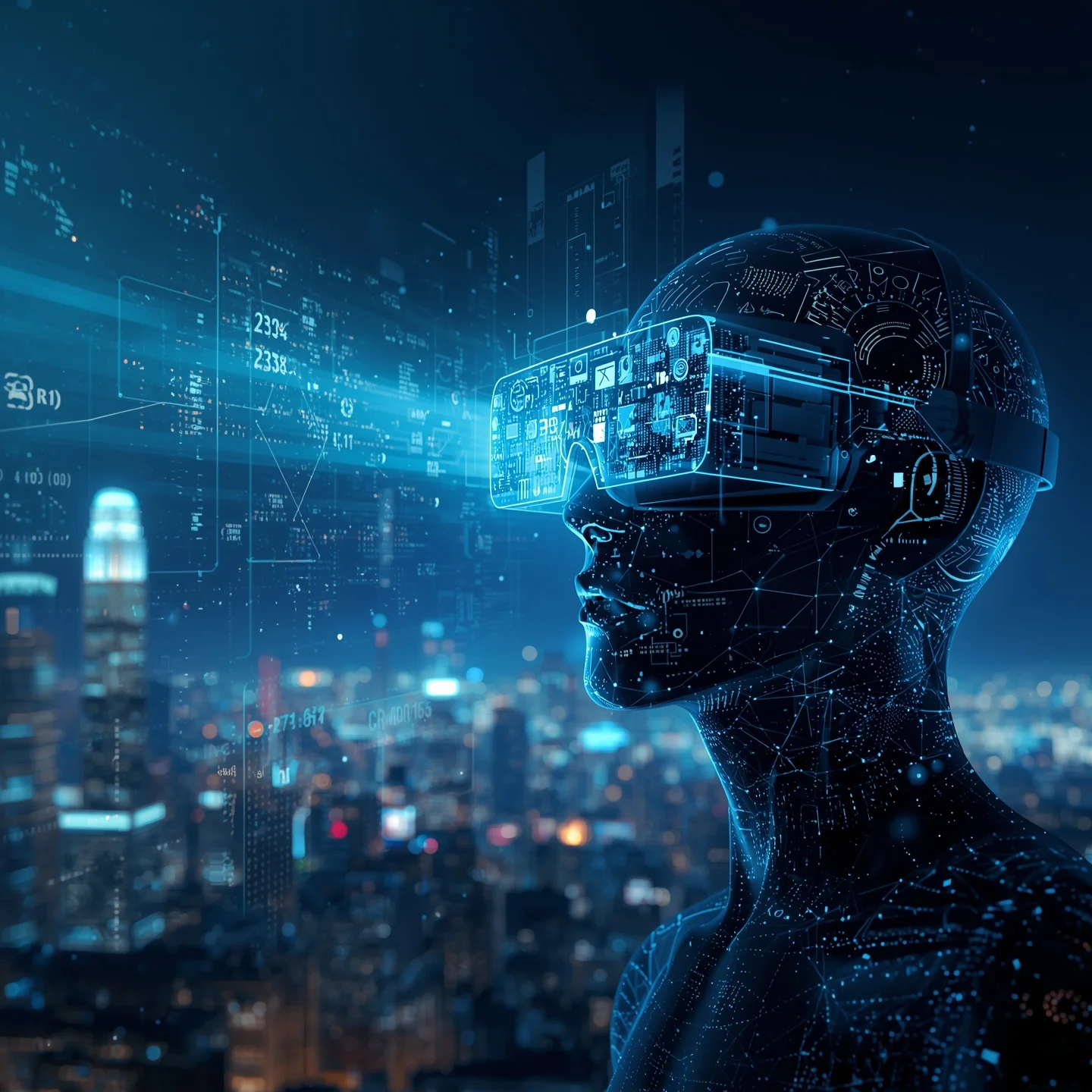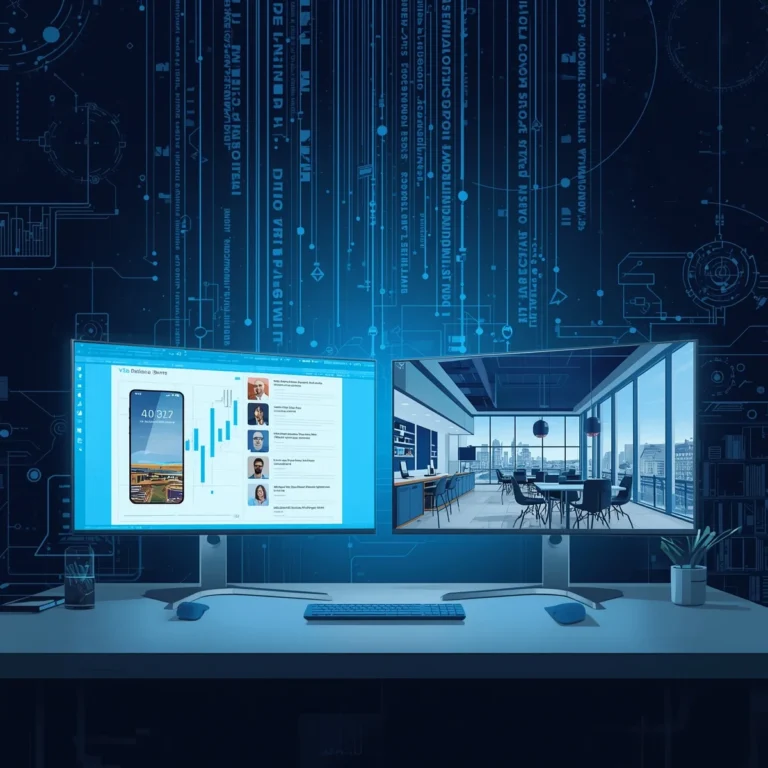Introduction
For nearly two decades, smartphones have been at the heart of our digital lives. They are the tools we rely on to work, connect, and entertain ourselves. Yet, as technology continues to evolve, tech giants envision future beyond smartphones, investing in new platforms and devices that promise to redefine how we interact with the digital world.
From artificial intelligence (AI) to augmented reality (AR) and wearable technology, major players like Apple, Google, Meta, Microsoft, and Samsung are preparing for a world where smartphones may no longer be our central hub. This article explores why companies are looking beyond phones, the technologies driving this shift, and what this means for consumers.
Why Smartphones Are Losing Their Central Role
The smartphone era has been revolutionary, but it is also reaching maturity. Each year, devices receive small upgrades—better cameras, faster chips, brighter screens—but innovation has slowed. Consumers are holding onto their phones for longer, signaling that the industry may have hit a plateau.
Meanwhile, the ways people interact with technology are changing. Voice assistants, connected homes, and immersive experiences are shifting attention toward alternatives. For tech companies, the future lies in moving beyond handheld devices and offering more seamless, natural ways to engage with digital content.
Key Technologies Driving the Shift
Artificial Intelligence (AI) and Ambient Computing
AI has already transformed how we use technology, but its future potential goes far beyond chatbots and recommendations. Tech leaders are building toward ambient computing, where intelligent systems work quietly in the background, anticipating needs and delivering information without constant screen interaction.
Virtual assistants like Siri, Google Assistant, and Alexa are becoming smarter, paving the way for hands-free interactions where the device fades into the background, and AI takes center stage.
Augmented Reality (AR) and Virtual Reality (VR)
Perhaps the boldest move toward the post-smartphone era is the rise of AR and VR technologies.
- Apple has introduced its Vision Pro headset, presenting it as a “spatial computing” device that merges digital content with the physical world.
- Meta is investing heavily in the metaverse, envisioning a virtual environment where people can socialize, work, and play beyond screens.
- Microsoft has focused on enterprise applications with HoloLens, delivering AR solutions for industries like healthcare and engineering.
These platforms suggest a world where immersive experiences replace traditional screens as our primary digital gateway.
Wearable Devices and Smart Accessories
Wearables are evolving beyond fitness trackers and smartwatches. Tech companies are exploring smart glasses, health-monitoring devices, and even brain-computer interfaces that make interaction with technology more intuitive.
Imagine real-time translation in your glasses or biometric sensors predicting health risks before they occur. Such devices could reduce the smartphone’s role by delivering information directly in more natural, integrated ways.
Internet of Things (IoT) Ecosystems
The growing network of connected devices is another major driver of the shift. From smart homes and autonomous cars to industrial sensors, IoT enables constant connectivity.
Tech giants are designing ecosystems where multiple devices communicate seamlessly. Instead of one smartphone acting as the control hub, intelligence will be spread across homes, offices, and wearables, creating a more integrated and hands-free experience.
How Major Tech Giants Are Preparing
Apple: Shaping the Future of Spatial Computing
Apple has a history of redefining industries, and its latest move is no different. With the Vision Pro headset and continuous improvements to the Apple Watch, the company is betting big on a future where immersive and wearable technologies complement or even replace smartphones.
Apple’s approach is to build an ecosystem where health, entertainment, and productivity tools work seamlessly across multiple devices, making the smartphone just one piece of a larger puzzle.
Google: Leading With AI and Ambient Experiences
Google is focusing on AI-powered ambient computing. Through services like Google Assistant, Gemini AI, and the Nest smart home ecosystem, Google envisions a future where devices fade into the background, and information becomes available exactly when and where it’s needed.
Their long-term strategy is clear: reduce dependency on screens by creating smarter environments powered by AI.
Meta: Building the Metaverse
Meta is pursuing the boldest vision by shifting entirely toward immersive experiences. With billions invested in AR/VR hardware like the Quest series and platforms designed for virtual interaction, Meta hopes to establish the metaverse as the next major evolution of the internet.
While adoption has been slow, Meta’s persistence highlights how central they believe this post-smartphone future will be.
Microsoft: Enterprise-First Approach
Microsoft is focusing its innovation on businesses. Through HoloLens and mixed reality platforms, the company is transforming industries by providing AR tools for training, engineering, and medical applications.
While not as consumer-focused as Apple or Meta, Microsoft’s enterprise-first strategy shows how new technologies may enter workplaces before becoming part of everyday life.
Samsung: Balancing Present and Future
Samsung continues to dominate the smartphone market but is also preparing for change. With investments in foldable phones, AR glasses, and AI-powered devices, Samsung is positioning itself to thrive whether smartphones remain dominant or give way to newer platforms.
Consumer Impacts: A Glimpse of the Future
Seamless Connectivity Across Devices
The post-smartphone world will likely be defined by ecosystems where devices work together effortlessly. A person could move from their car to their home office to a headset without losing context or connectivity.
More Natural Human-Technology Interaction
Future interfaces will prioritize voice, gestures, and even thought-based inputs, making technology easier and more intuitive to use. This shift could also improve accessibility for people with disabilities.
Highly Personalized Experiences
With AI as the backbone, devices will adapt to individual habits and preferences, offering personalized assistance, smarter recommendations, and predictive problem-solving.
Privacy and Ethical Concerns
As technology becomes more integrated into daily life, it will collect more personal data. Protecting privacy and ensuring ethical use of AI will be critical challenges for both companies and regulators.
Challenges in Moving Beyond Smartphones
- High Costs: Current AR/VR headsets and advanced wearables are too expensive for mass adoption.
- Technology Limitations: Issues like short battery life, bulky designs, and limited apps slow down progress.
- Consumer Resistance: Many users are comfortable with smartphones and may hesitate to embrace entirely new platforms.
- Infrastructure Needs: A post-smartphone world requires robust internet speeds, cloud computing, and advanced hardware to deliver smooth, immersive experiences.
Conclusion
Smartphones have defined the digital era, but their dominance may not last forever. As tech giants envision future beyond smartphones, they are betting on AI, AR/VR, wearables, and IoT ecosystems to transform the way we connect and interact.
The shift will not happen overnight. Challenges like cost, adoption, and infrastructure need solutions before these technologies can replace smartphones. However, the direction is clear: the next chapter in digital innovation will expand far beyond the small screens we carry today.
The smartphone changed the world once. The question now is: which technology will change it again?





